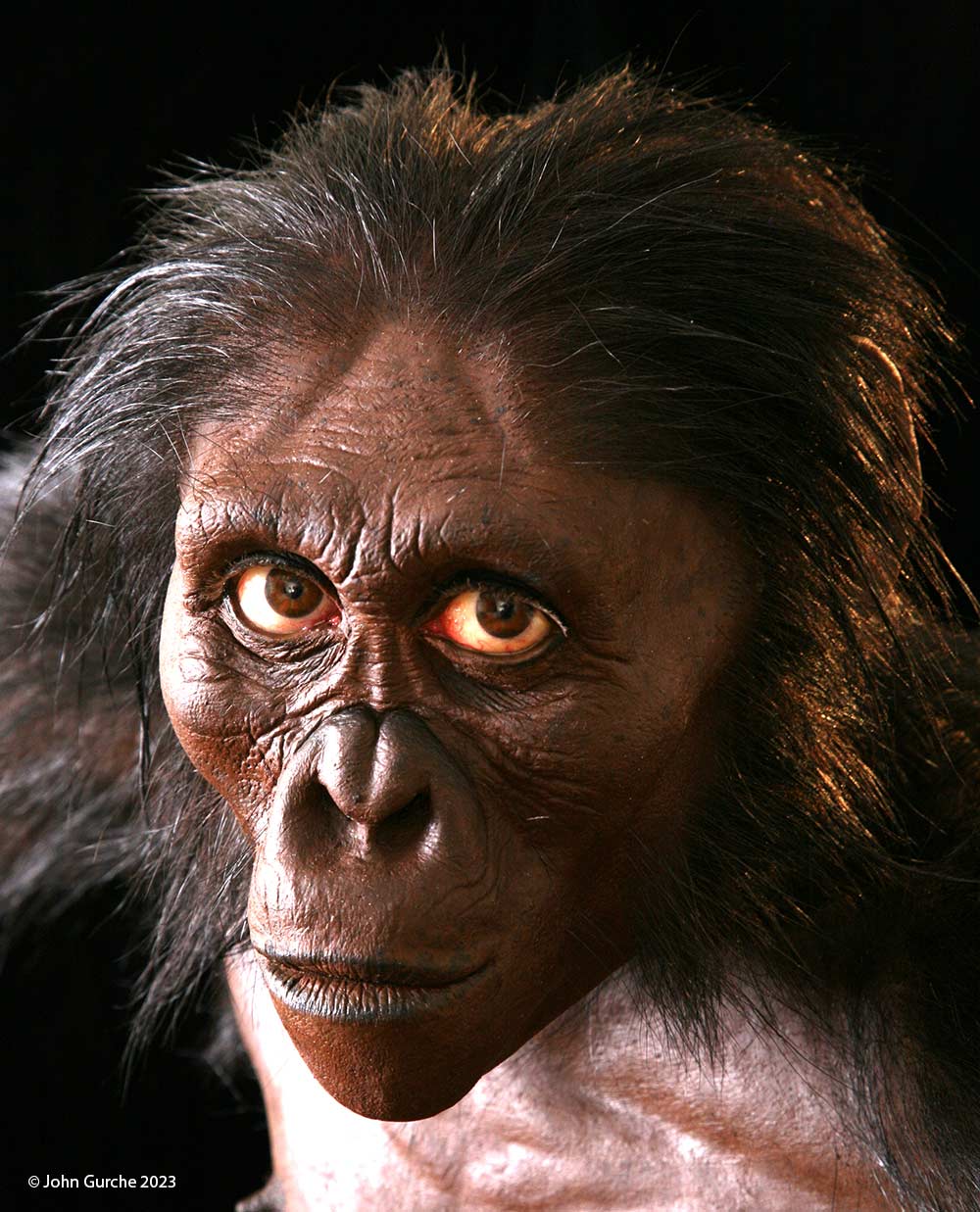Lucy
Australopithecus afarensis

Lucy AL 288-1 was discovered by American paleoanthropologist Donald Johanson in 1974 in Hadar, Ethiopia, a part of the Afar Triangle of East Africa. Her species name reflects the region where she was found. Her common name “Lucy” comes from the 1967 Beatles song Lucy in the Sky with Diamonds which was played repeatedly in camp following her discovery.
Several hundred fossilized bone fragments, making up approximately 40% of her actual skeleton, were recovered and assembled.
Argon-argon dating technology indicates Lucy’s fossilized skeletal remains are 3.2 million years old.
Her original skeleton now resides in the National Museum of Ethiopia in Addis Ababa.
Significance
Lucy’s almost intact left pelvic bone and sacrum indicate she is a female. Her erupted third molars suggest she had reached sexual maturity and adulthood at the time of her death. Her cause of death is unknown.
Lucy’s small cranium (capacity 365-417 cc) and short stature (1.1 m or 3 feet 7 inches) are similar to pre-australopithecines such as Ardipithecus ramidus. The ratio of her humerus, or upper arm bone, to her femur, or thigh bone, lies between that of a chimpanzee, with whom humans share a common ancestor and that of a modern human. Her leg bones are characteristic of modern humans, providing strong evidence of a walking gait and upright stance. All these features suggest bipedalism preceded increased brain size in hominin evolution.

